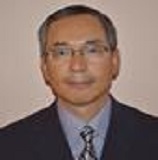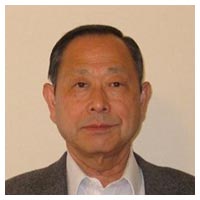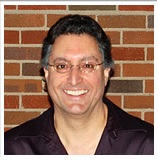Dr. Farouk El-Baz is Research Professor and Director of the Center for Remote Sensing at Boston University, Boston, MA, U.S.A. He is Adjunct Professor of Geology at the Faculty of Science, Ain Shams University, Cairo, Egypt. He is also a Member of the Board of Trustees of the Geological Society of America Foundation, Boulder CO.He was born on 1 January 1938 in the Nile Delta town of Zagazig. Twenty years later, he received a BSc in chemistry and geology from Ain Shams University, followed by a scholarship for graduate study. In 1961, he received a MS degree in geology from the Missouri School of Mines and Metallurgy; his performance won him membership in the honorary society of Sigma Xi. In 1964 he received a PhD in geology from the University of Missouri after conducting research in 1962-1963 at the Massachusetts Institute of Technology (MIT), Cambridge MA. In 1989, he received an Honorary Doctor of Science (DSc) degree from the New England College, Henniker NH.
Dr. El-Baz taught geology at Assiut University, Egypt (1958-1960) and the University of Heidelberg, Germany (1964-1965). He joined the Pan American – U.A.R. Oil Company in 1966, where he participated in the discovery of El-Morgan, the first offshore oil field in the Gulf of Suez.
From 1967 to 1972, Dr. El-Baz participated in the Apollo Program as Supervisor of Lunar Science Planning at Bellcomm Inc., a division of AT&T that conducted systems analysis for NASA Headquarters in Washington DC. During these six years, he was Secretary of the Landing Site Selection Committee for the Apollo missions to the Moon, Principal Investigator of Visual Observations and Photography, and Chairman of the Astronaut Training Group.
His desert research, spanning over 25 years, helped in dispelling the public misconception that deserts were man-made and explained how arid lands originated and evolved in response to global climatic variations. His research methods are now commonly replicated in desert studies throughout the world.
From 1982 to 1986, Dr. El-Baz was Vice President of Science and Technology at Itek Optical Systems, Lexington MA. He oversaw the application of data from the Space Shuttle’s Large Format Camera. The photography of this advanced system assisted greatly in El-Baz’s program of desert study from space.
In 1986 Dr. El-Baz joined Boston University as Director of the Center for Remote Sensing to promote the use of space technology in the fields of archaeology, geography and geology. Under his leadership, the Center has grown to become a leading force in the applications of remote sensing technology to environments around the world. In 1997, NASA selected it as a “Center of Excellence in Remote Sensing.â€
Dr. El-Baz is a member of the United States National Committee for Geological Sciences of the National Academy of Sciences. He serves on the Board of Trustees of the new Alexandria Library, the Arab Science and Technology Foundation, the Egyptian Center for Economic Studies, the Egyptian-American Affairs Council, the Moroccan-American Council, the World Affairs Council of Boston, as well as the editorial boards of several international professional journals. He is a member of many national and international professional societies and a Fellow of the Geological Society of America, the American Association for the Advancement of Science, the Royal Astronomical Society (London), and the Explorers Club (New York).
He has won numerous honors and awards, including NASA’s Apollo Achievement Award, Exceptional Scientific Achievement Medal, and Special Recognition Award; the University of Missouri Alumni Achievement Award for Extraordinary Scientific Accomplishments; the Certificate of Merit of the World Aerospace Education Organization; the Golden Door Award of the International Institute of Boston; the Award for Public understanding of Science and Technology of the American Association for the Advancement of Science, and the Arab Republic of Egypt Order of Merit – First Class. He also serves as President of the Arab Society for Desert Research.
1. Sedimentary Features and Geochemistry of the Sulphide Facies in the Transition Between the Lamotte Sandstone and the Bonneterre Formation in the Fredricktown Area, Madison County, Missouri. M.S. Thesis, Missouri School of Mines and Metallurgy, Rolla, 147 p. (1961)
2. Sedimentary Features in the Layered Sulphide Deposits of Fredricktown, Missouri. (G. C. Amstutz, R. P. Uhley, and F. El-Baz; Abstract). Geol. Soc. Amer., Spec. Pap. No. 68, p. 128. (1961)
3. Statistical Study of Bravoite Zoning. (F. El-Baz and G.C. Amstutz). Internat. Miner. Assoc., 3rd Gen. Meet., Miner. Soc. Amer., Spec. Pap. No.1, p. 190-197. (1963)
4. Petrology and Mineralogy of Certain Portions of the Fredricktown Deposits, Missouri: A Case Study of Ore Genesis in a Layered Sulphide Deposit. Ph.D. Dissertation, Univ. of Missouri, Columbia, 292 p. (1964)
5. Diagenetic Behaviour of Sulphides. (G.C. Amstutz, P. Ramdohr, F. El-Baz, and W. C. Park). In: Sedimentology and Ore Genesis; Developments in Sedimentology, Vol. 2, G. C. Amstutz, Editor, Elsevier Pub. Co., Amsterdam, p.65-90. (1964)
6. In Situ Sulfurization of Some Minerals in the Missouri Lead Belt. (Abstract) Trans. Amer. Geophys. Union, Vol. 48, No. 1, p. 248. (1967)
7. Concept of the Geochemical Cycle. (Abstract) Geol. Soc. Amer., Spec. Pap. No. 115, p.56. (1968)
8. Coprolites Versus Fecal Pellets. (Abstract) In: Geology of the Giants; Amer. Assoc. Petrol. Geol. – Soc. Econom. Paleont. Miner., Ann. Conv., April 1968, p. 58. (1968)
9. Image of Geology. Geotimes, Vol. 13, No. 8, October 1968, p. 7-8. (1968)
10. Geologic Characteristics of the Nine Lunar Landing Mission Sites Recommended by the Group for Lunar Exploration Planning. Bellcomm Technical Report, Washington, D.C., No. TR-68-340-1, 61 p. (1968)
11. * Coprolites: An Annotated Bibliography. (W. Hantzschel, F. El-Baz, and G. C. Amstutz). Memoir 108, Geol. Soc. Amer., Boulder, Colorado, 132 p. (1968)
12. * Say It in Arabic (Egyptian Dialect). Dover Publications Inc., New York, 185 p. (1968)





















